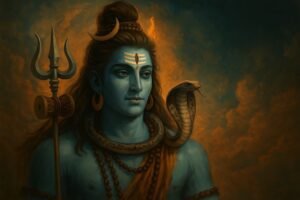Table of Contents
ToggleHinayana Buddhism is one of the major streams of Buddhism. The term Hinayana means “small vehicle”. Hinayana Buddhists did not accept the worship of Buddha’s idols or images. The ideal goal of Hinayana Buddhism is to attain “Nirvana.” It gave emphasis on the individual salvation and to achieve this through self-discipline and meditation. This type of Buddhism is mostly practiced in Sri Lanka, Myanmar, Thailand etc.
History Of Hinayana Buddhism
Hinayana is a Sanskrit term and combination of two words ‘Hina’ means ‘lesser ‘ and ‘Yana’ which means vehicle. It is believed that Hinayana Buddhism began around 250 BC. Hinayana Buddhism otherwise referred to as Theravada Buddhism. It is rooted in the teachings and practices of early Buddhism and considered that Hinayana Buddhism incorporates the original teachings of Buddha. Mahayana Buddhists played an important role in the coming of Hinayana Buddhism.
Members of Hinayana
Hinayana originated from the teachings of Siddhartha Gauthama (Buddha), the founder of Buddhism and his teachings paved the way for the beginning of a new tradition called Hinayana Buddhism. Sariputra, Ananda, and Maudgalyayana are the other key figures in this tradition.
Siddhartha Gauthama
As the founder of Buddhism, Siddhartha Gauthama, became an influential figure in spreading the ideas of Buddhism into different parts of the world including through quotes. Teachings of Buddha form the basis for Hinayana Buddhism and they believed that Buddha attained “Nirvana” and he was a human being not divine power.
Sariputra
Sariputra, is an eminent person in Hinayana. He was the disciples of Buddha. His loyalty to strict monastic rules gained the attention of people and became a popular person. He is eminent for his wisdom and understanding.
Ananda
Like Buddha and Sariputra, Ananda is another influential person associated with Hinayana and the beloved disciple of Buddha. Ananda is great for preserving Buddha teachings that he became one of the central figures in Hinayana Buddhism.
Maudgalyayana
As the disciple of Buddha, Maudgalyayana or moggallana, one of the prime figures in early Buddhism made great contributions to Hinayana Buddhism. Known for performing supernatural feats and he employed spiritual powers in his teaching methods.
Major Difference from Mahayana Buddhism
Mahayana Buddhism and Hinayana Buddhism the two main streams of Buddhism have their own differences in teachings, practices, and developments. Let’s see the major difference in detail:
- Around 500 BC Mahayana Buddhism began to develop and Hinayana Buddhism appears around 250 BC.
- Hinayana mostly followed in Sri Lanka, Thailand, Myanmar, and Cambodia.
- Hinayana Buddhist writings was written in the Pali language, and Mahayana Buddhist literature was in Sanskrit language.
- Hinayana Buddhists believed that Gauthama Buddha was a common man who attained “Nirvana.” Other hand, Mahayana Buddhists believed Gautham Buddha was divine.
- Hinayana lay great significance on monastic life and achieved Nirvana through self-discipline and meditation.
- Mahayana Buddhists place emphasis on idol worship, but Hinayana Buddhists do not believe in it.
Read More : Major Difference Hinayana And Mahayana Buddhism
Core Beliefs Of Hinayana Buddhism
Hinayana Buddhism or Theravada Buddhism follow the core teachings of Buddha and give attention to individual salvation through meditation. Focusing on individual liberation, they believed that people can attain “Nirvana” through self-discipline and proper mediation. They provide immense emphasis on meditation which helps to cultivate mindfulness, and the true nature of alive. The ideal of Hinayana Buddhist is to become an “Arhat” which means the person who attained “Nirvana.”
Hinayana Buddhist scriptures were written in the Pali language (Ancient Indian Language) which incorporates the authentic records of Budha teachings. One of the main features of Hinayana is its rejection of idol worship which indicates their significance of personal development and liberation. Four Noble Truths and Eight-Fold Paths are the main doctrines of Hinayana Buddhism, which is considered as a principal for realizing the suffering and helps to attain individual liberation.
Through their teachings they liberate the people to become an “Arhat.” According to Hinayana Buddhism, there is no one permanent in this world and everything is changing. A man is responsible for his own sufferings and happiness. Through cultivating mindfulness, they can seek peace and develop self-discipline which makes the person find the truth nature of life and Individual karma is the cause of suffering in people.
Hinayana in Current Situation and How to Practice
Unlike other branches of Buddhism, Hinayana Buddhism placed great importance on self-development and liberation. It has a significant space in modern society as it mainly focuses on individual liberation and development. It provides insights about the challenges and suffering of both people and society through its teachings. People made efforts to uphold and preserve the teachings of Hinayana. Its attention to simplicity and mindfulness contributed to the lasting impact on various places.
Individuals can practice this through meditation and self-discipline. Meditation is considered as the core of Hinayana as it cultivates mindfulness. Developing self-discipline is crucial to Hinayana. It helps to make our mind and body out of negative emotions. Through practicing Hinayana Buddhism, individuals can realize their sufferings and personal development. While practicing Hinayana, people can avoid harmful actions.
Conclusion
Hinayana or Theravada Buddhism has contributed to the individual salvation and personal development. Cultivating mindfulness, it makes people to know the true nature of life and develop self-discipline. Practicing Hinayana m helps to reduce negative emotions and provides insights about causes of suffering.









